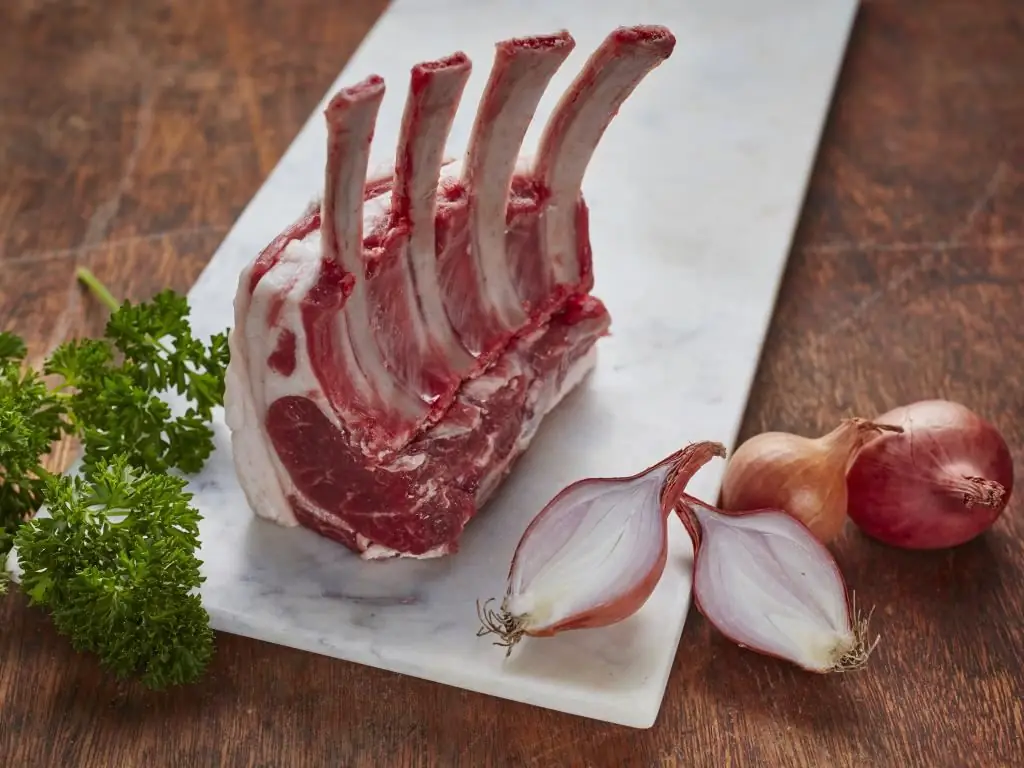2025 Author: Isabella Gilson | [email protected]. Last modified: 2025-01-23 12:50:36
Today, many outlets where you can buy seafood delicacies offer customers not only fresh fish, but also a cleaning service. Sellers usually ask not much for their work - on average, from 10 to 30% of the purchase price. Not wanting to soil the kitchen with scales and trying to save time, many customers enjoy using this additional service.
But, firstly, this practice is not used everywhere. Secondly, if you buy frozen fish, it will be simply impossible to clean it in the store. And thirdly, if the service is provided, the procedure is usually performed hastily, at home you still have to get rid of the remnants of the insides and scales, fiddle with small pieces of gills, remove fins.
Therefore, anyone who plans to treat their family to a gourmet meal should know not only the cooking recipe, but also how to remove the gills from fish.
Our article will tell about this.
Why do gills need to be removed?
The answer to this question is simple, but first we note that getting rid of the gills is not always necessary. When it comes to riverlake fish, as a rule, should protect themselves from the smell of mud. It is in the gills that there is a focus of an unpleasant odor, which can also affect the taste of the finished dish. Therefore, when cooking perch, silver carp, pike, you must always remove the gills.
The gills of marine fish can also fill the food with an unpleasant aftertaste. If you plan to bake whole fish or put the heads in your ear, getting rid of the gills is a must. They can also contain all kinds of garbage: duckweed, fragments of aquatic plants and even living creatures.
When boiled, the gills give the broth a disgusting unappetizing hue and completely unnecessary smells. This is the answer to the question of why to remove the gills of fish for fish soup.

Gill removal process
Our step-by-step instructions will help you overcome any gills. The process should be started after cleaning the fish from scales. Consider how to remove gills from fish:
- Turn the carcass belly towards you. Bend back the operculum on one side and make an incision near the frontal attachment of the gill arch. To do this, you can use both a sharp knife and culinary scissors.
- Do the same with the second gill arch.
- Flip back the bridle that connects the gill arches under the fish's mouth. Insert a sharp knife through, cut off both gill arches from the bridle.
- Carefully remove the gills.
- Rinse the carcass under running water, substituting under the jet the place to which the gill arches were attached.

That's all wisdom. If you first thought about how to remove the gills from a fish, then most likely you imagined a complex and time-consuming process. Perhaps on the first try, it will turn out that way. But with a little dexterity, you can easily get the job done.
Precautions
Before you remove the gills from the fish, pay attention to the following. Some species have acquired many protective devices. For example, pike perch in the process of evolution has grown sharp spikes on its fins. Gills can also have spiky edges.

Trying to pull out the gills with your hand, especially when cleaning large fish, you risk injury. To avoid this, inspect the surface, do not jerk. You can even use ordinary pliers to remove the gills, but you need to pull not by the middle of the arc, but by the very edge. Otherwise, the gills will tear, and you will have more work to do: getting rid of torn flaps is more difficult than getting rid of a solid organ.
Do fish always need to remove gills?
Some marine fish, especially small ones, do not have a strong odor. You can not mess with the gills of herring, mackerel, saury. Even when s alted entirely, there will be no foreign odors.
Of course, don't waste time fighting gills unless you plan to use fish heads in your cooking.
Recommended:
How to remove the smell of lamb when cooking: methods and recommendations

Many housewives often do not cook lamb because of the specific smell, which is not always pleasant. However, if this meat is correctly selected and cooked, then the kitchen will have the most pleasant and delicious aromas. Let's learn in more detail how to remove the smell of lamb when cooking
How to cook fish in a marinade: a step by step recipe with a photo

Marinated fish is a dish that we all love. A photo of fish marinated with a classic recipe is what makes you drool. Indeed, the dish is very tasty. Everyone loves him without exception. With its incredible taste, preparing this dish is not difficult at all. Of course, if you are cooking a dish for the first time, then it is always a little scary, but our step-by-step photos and detailed descriptions of the process should remove all difficulties
How to smoke fish: step by step recipe with photo. Recipes and cooking methods

Everyone loves smoked fish, but not everyone knows that you can cook this delicious product yourself. To make the fish tasty, you need to understand how to do it. This will be discussed
Stuffed fish recipe: how to cook? Stuffed fish: step by step recipe with photo

Not every housewife knows the recipe for stuffed fish. To correct this situation, we decided to present to your attention several ways to prepare delicious and satisfying dishes that can be served not only for a family dinner, but also for a festive table
Pita with canned fish: a step-by-step recipe with a description and a photo, cooking features

Snacks based on thin sheet pita bread are popular on holiday tables. There are a huge number of toppings. In this article, we will consider pita bread with canned fish (recipes with photos), for which you can use any type of this product (saury, sardine, mackerel, pink salmon, tuna, and so on). Such rolls are not only easy to prepare, but also turn out to be satisfying, with amazing taste

